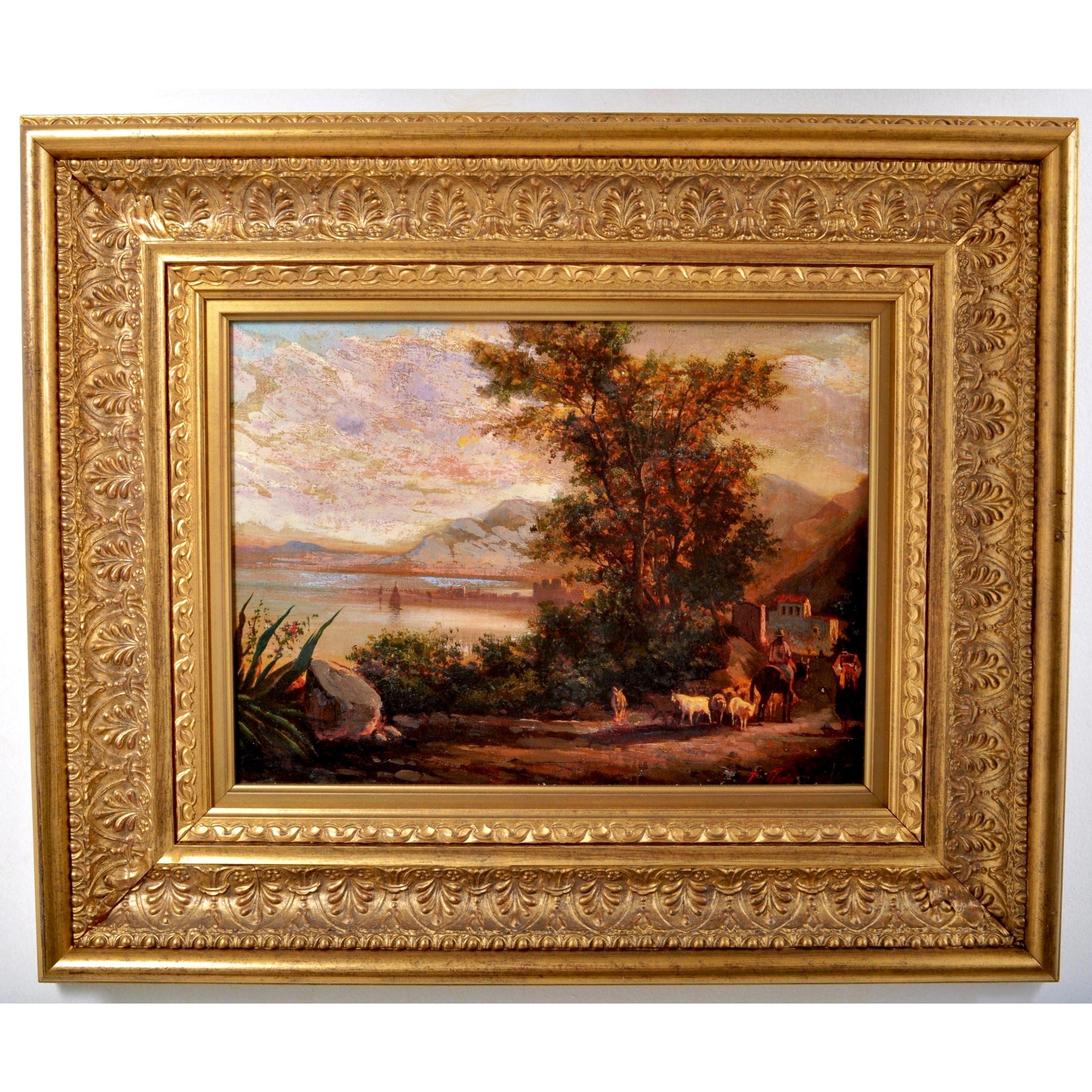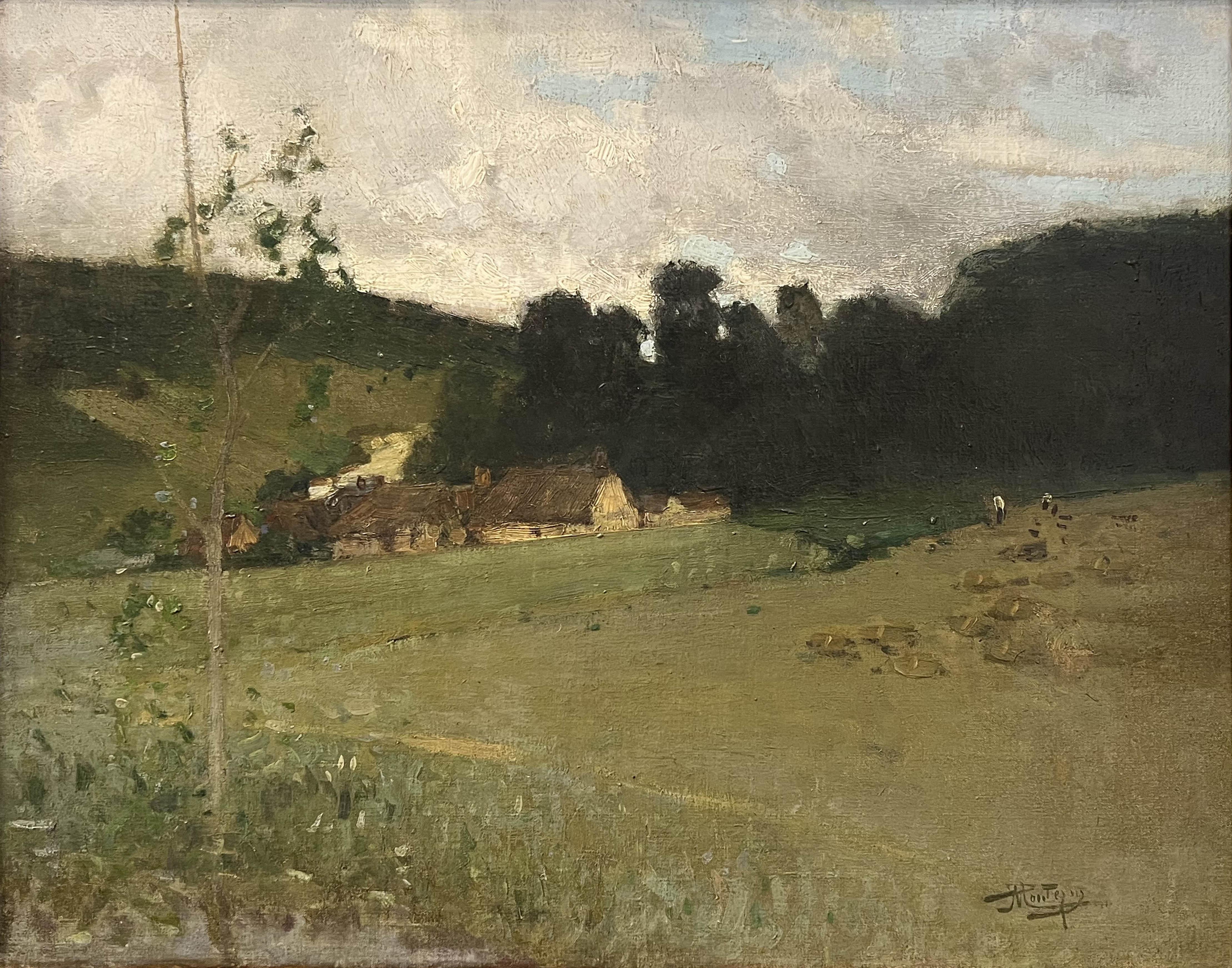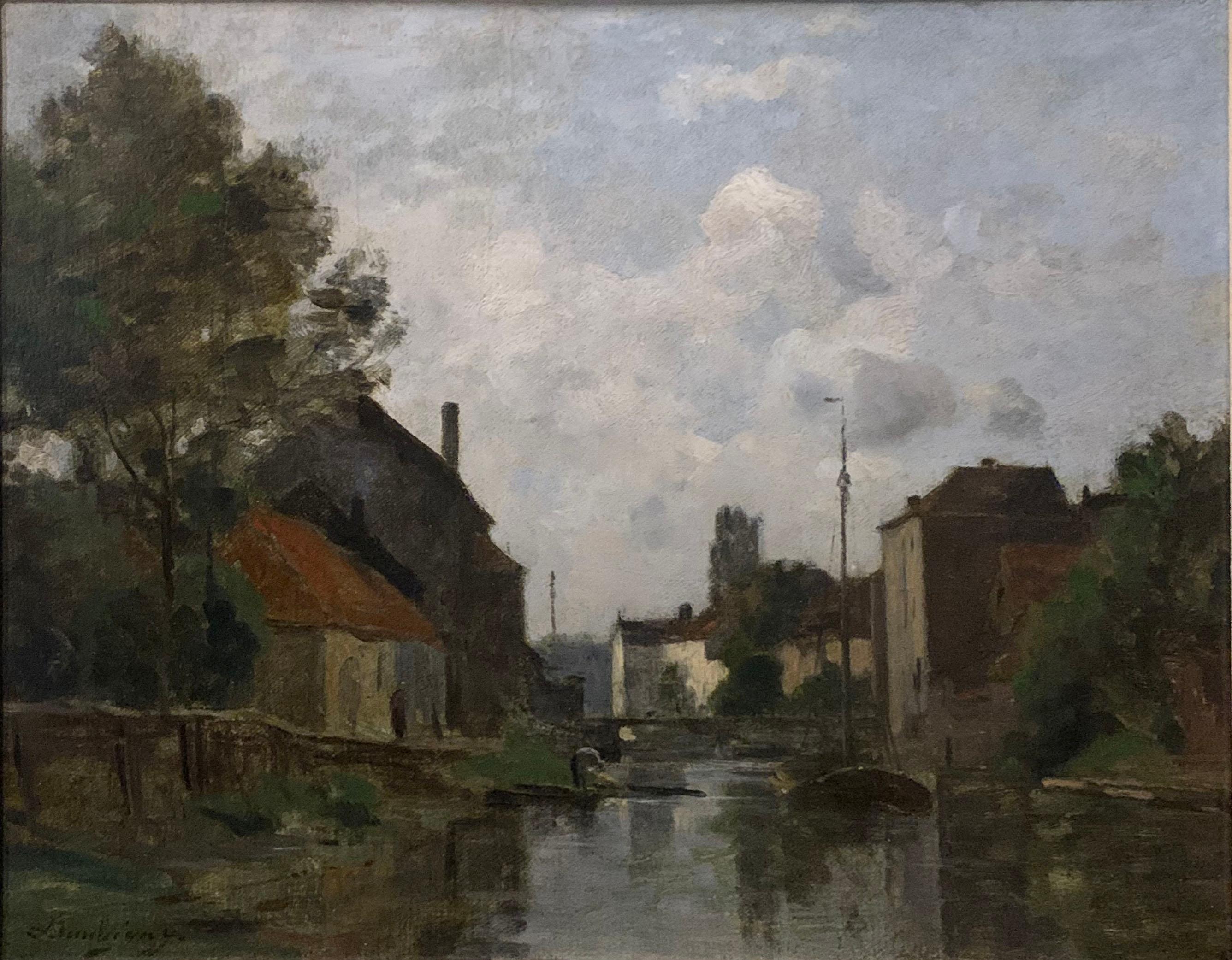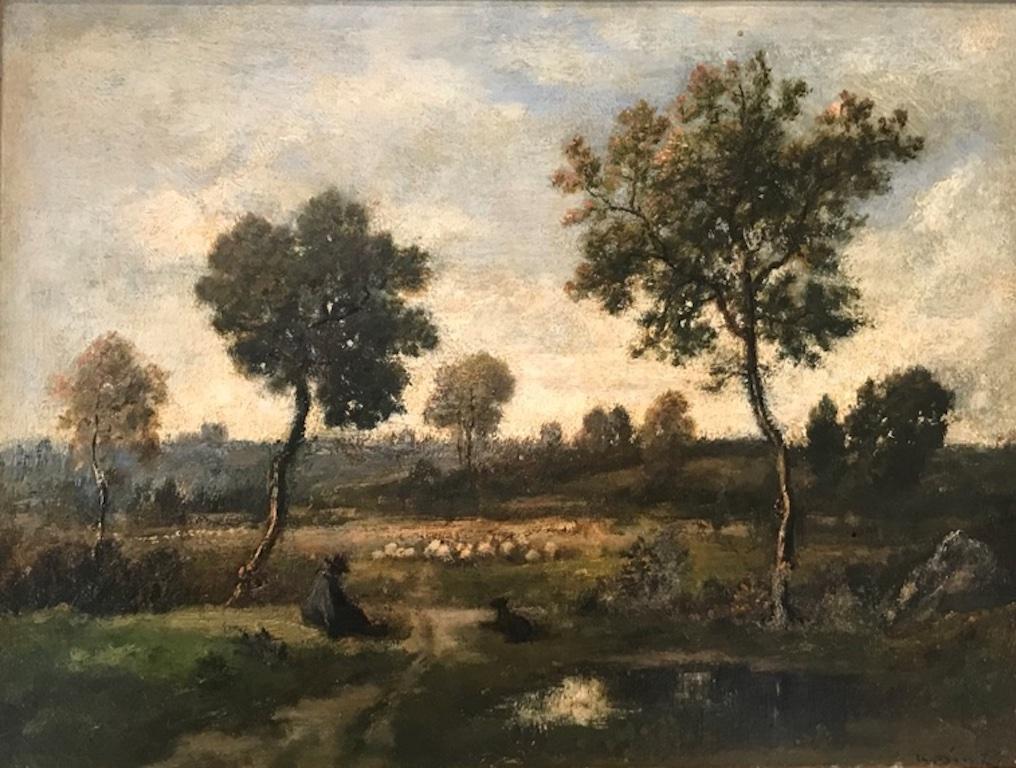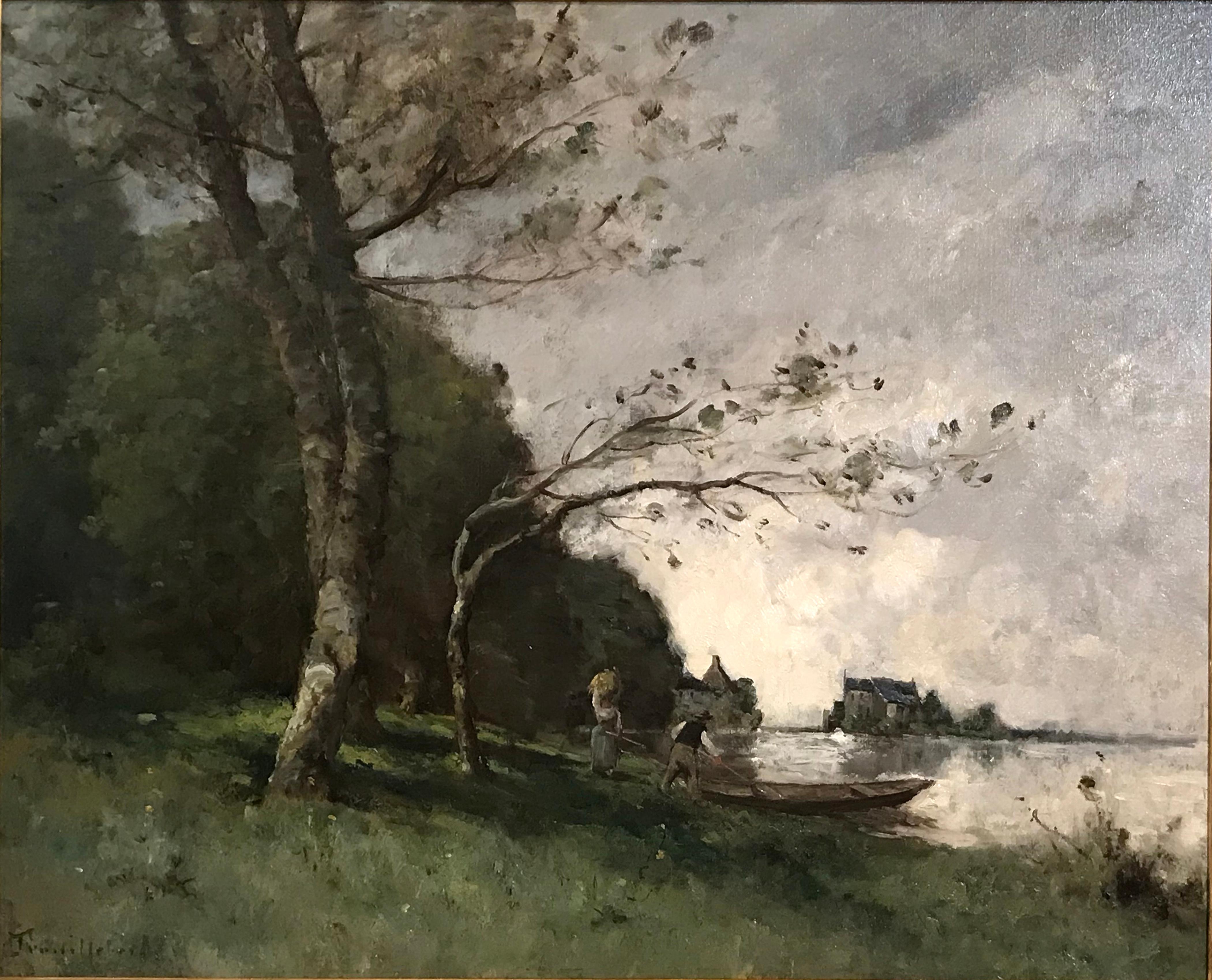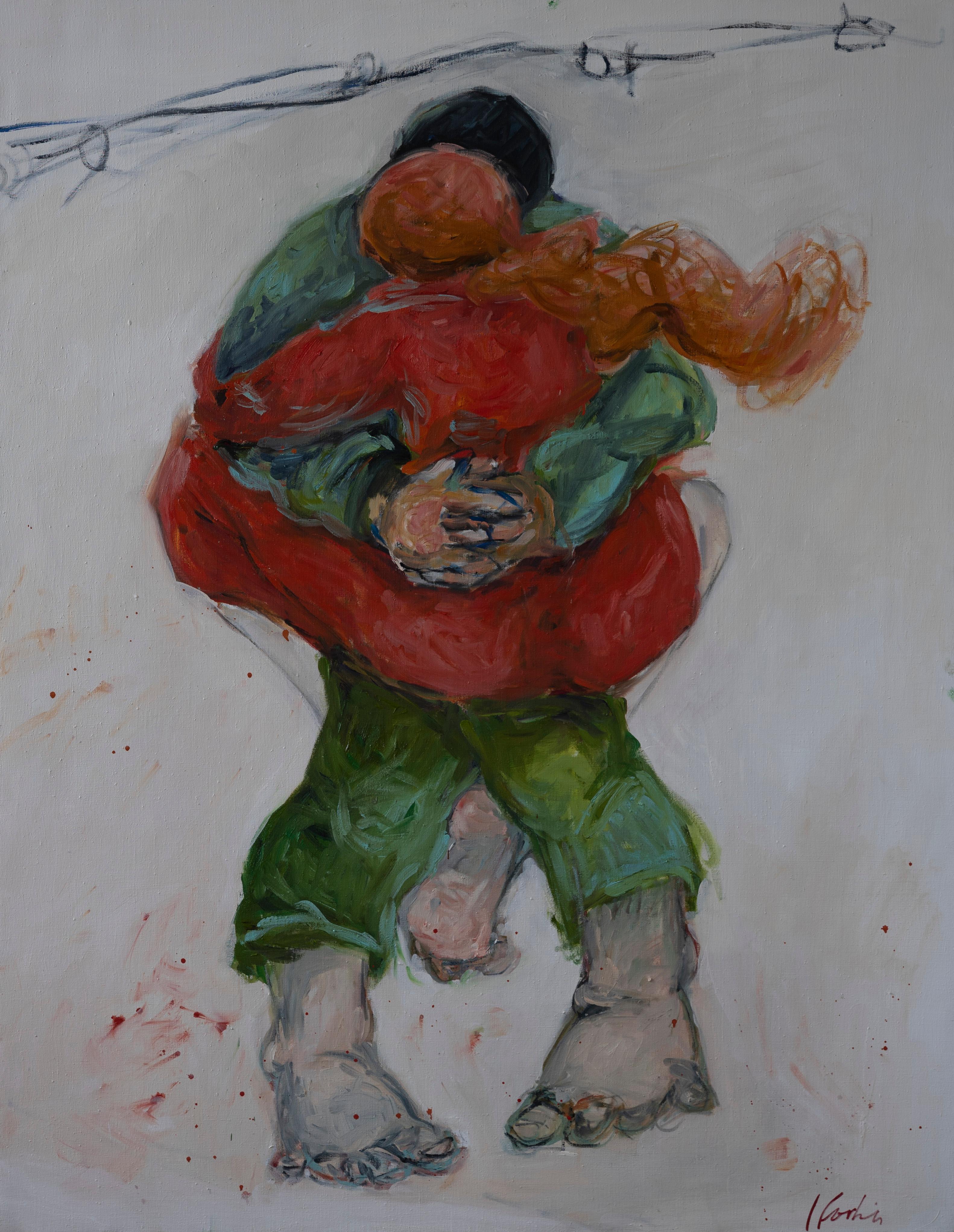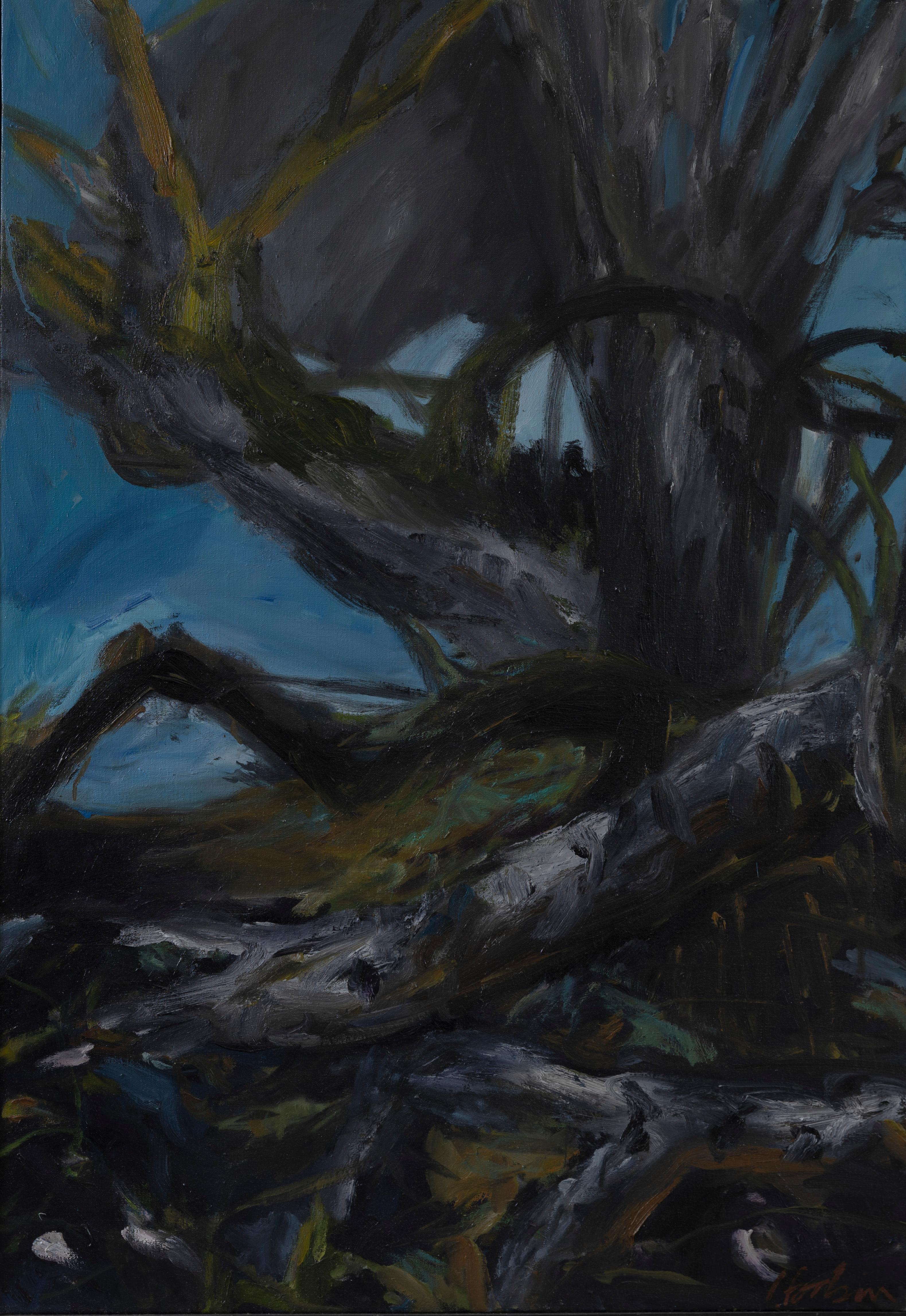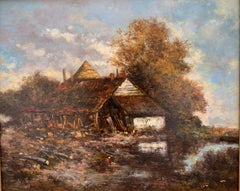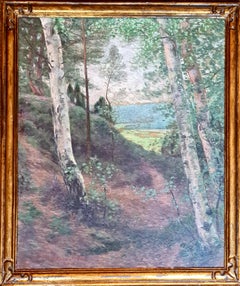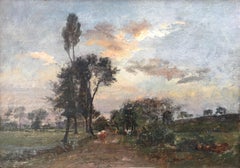
Country Lane With Herd, Oil Canvas signed Charles Beauverie, Barbizon circa 1880
View Similar Items
Want more images or videos?
Request additional images or videos from the seller
1 of 9
Charles BeauverieCountry Lane With Herd, Oil Canvas signed Charles Beauverie, Barbizon circa 18801880
1880
About the Item
- Creator:Charles Beauverie (1839 - 1923, French)
- Creation Year:1880
- Dimensions:Height: 10.63 in (27 cm)Width: 15.56 in (39.5 cm)
- Medium:
- Movement & Style:
- Period:
- Condition:
- Gallery Location:Paris, FR
- Reference Number:Seller: T201stDibs: LU114424216292
About the Seller
5.0
Vetted Seller
These experienced sellers undergo a comprehensive evaluation by our team of in-house experts.
1stDibs seller since 2019
8 sales on 1stDibs
More From This SellerView All
- The Barn, Oil On Bord, Signed Jean-Charles Cazin, Barbizon School, 1865By Jean-Charles CazinLocated in Paris, FROil on panel representing a barn, signed JC Cazin on the lower left corner. Jean Charles Cazin (1840-1901) Born in Samer (his father, from Bologna,...Category
Late 19th Century Barbizon School Landscape Paintings
MaterialsOil
- Mediterranean Capriccio, Oil on canvas by Abraham Storck, circa 1680By Abraham Jansz StorckLocated in Paris, FR« A Mediterranean capriccio » Oil on canvas by Abraham STORCK With an appraisal by René Millet ( Well Known French Expert in Paris) Within a tortoise-shell Turtle This oil on canvas...Category
17th Century Old Masters Landscape Paintings
MaterialsCanvas
- View Of A City, Animated Landscape by Jean Victor BertinLocated in Paris, FR"View of a city, animated landscape" attributed to Jean Victor Bertin. Oil on panel VB monogrammed, Circa 1830 Within its original giltwood frame from the same period. Dimensions without frame Height: 56 cm / 22 inches Width: 90 cm / 35.4 inches Dimensions with frame Height: 76cm / 30.7 inches Width: 108 cm / 42.5 inches Depth: 8 cm / 3.14 inches Certificate of authenticity Jean-Victor Bertin (1767-1842) was a French landscape painter of the neoclassical school. Considered as one of the masters of the historical landscape's school, he painted an abundant production influenced by Italy. Therefore, he is one of the most talented representatives of the landscape "adjusted" Italianate character and elegiac. He played the role of intermediate between the historical landscape and the romantic movement. His paintings are found in many museums : Beziers, Fontainebleau, Dijon, Honfleur, Rennes, Versailles, Angers, Autun, Carpentras, Cherbourg, Coutances, Evreux, La Fere, Lille, Quimper, Nantes, Reims, Rouen, Toulouse. Bibliography: Dictionary French landscape painters of the nineteenth century, Lydia Harambourg. Dictionary of the Little Masters...Category
1830s Landscape Paintings
MaterialsOil, Wood Panel
- Fishermen By The Lake, Oil On Canvas, Signed Dommersen, Dutch School, 1870By Pieter Cornelis DommersenLocated in Paris, FROil on canvas depicting a scene of Fishermen by a lake, Dutch landscape. Signed on the lower left corner of Pieter Cornelis Dommersen. Painter of Dutch seas and landscapes, in Lond...Category
Late 19th Century Academic Landscape Paintings
MaterialsOil
- Waterfall landscape signed Eugène Deterre, Bruges circa 1830Located in Paris, FRPainting, oil on panel depicting an animated landscape with river and waterfall. Signed Deterre Eugene (1810-1842) and located Brugges. Flemish School, circa 1830 Belgian. WithIn ...Category
1830s Academic Landscape Paintings
MaterialsWood Panel
- View of Royat, Puy-de-Dôme, circa 1830Located in Paris, FRPainting, oil on paper pasted on panel, representing a view of the city of Royat, located in the department of Puy-de-Dôme. Located in the western suburbs of Clermont-Ferrand, the c...Category
1830s Italian School Landscape Paintings
MaterialsOil
You May Also Like
- 19th century French Barbizon School Painting oil on Canvas Landscape circa 1840Located in Portland, OR19th century French Barbizon School Painting, oil on canvas signed "Marin", Circa 1840. A very attractive bucolic, pastoral landsacpe scene with sheep grazing on the banks of a lake ...Category
Early 19th Century Barbizon School Landscape Paintings
MaterialsOil, Canvas
- First Communion - Barbizon Figurative Pastel Painting by Leon Augustin LhermitteBy Léon Augustin LhermitteLocated in Marlow, BuckinghamshireSigned Barbizon figures in landscape pastel on paper circa 1885 by French painter Leon Augustin Lhermitte. The piece depicts a first communion ceremony, with girls in white dresses and headscarves walking through a village as elder women look on. A wonderful piece in the artist's distinctive style. Signature: Signed lower left Dimensions: Framed: 27"x31" Unframed: 20"x24" Provenance: Arthur Tooth & Sons - London (label verso) Léon Augustin Lhermitte was the son of a school teacher. He painted from a very early age and settled in Paris in 1863, enrolling in the École Impériale de Dessin. His teacher was Lecocq de Boisboudran. In the early days of his career he earned a living doing illustrations for boxes of sweets and the catalogues of the cabinet-makers of the Faubourg St-Antoine, as well as publishing houses. In 1879 he went to Great Britain, to which he returned frequently. The same year he met the art dealer Paul Durant-Ruel who exhibited his works. He was one of the founders of the Société Nationale des Beaux-Arts, of which he became vice-president. Lhermitte initially produced charcoal drawings which revealed his deep feeling for nature. His first attempt, Banks of the Marne near Alfort, caused a sensation. Following this he executed canvases, showing himself to be a fine landscape artist and a skilful draughtsman. He painted scenes from rural life almost exclusively and benefited from exceptional interest generated by the prizes awarded to the works of J. F. Millet. But although he was very much affected by the work of the painter of Angelus, he himself sought only the pictorial element and not a synthetic translation. Many other French masters of the period share his completely objective vision, for example Bastien Lepage, Roll, J. C. Cazin and Rafaelli. Like them, he put into practice very early on the technique of 'clear painting' made fashionable by the pursuit of Impressionism. But this group of artists borrowed from this method only those elements which appealed to public taste, and ignored chromatic elements. Lhermitte also paid the price for the easy success of those early days. His peasants, which found general favour with the public at the time, nowadays seem rather feeble alongside Camille Pissarro's renderings of the same subject. However, in order to pass judgement on an artist such as Lhermitte, it is necessary to understand the era in which he worked, the era in which Realism was the only acceptable approach. It was in the atmosphere of the 'Théâtre Libre' of Antoine and the novels of Maupassant, Zola and their imitators that this type of art developed. In this context, Lhermitte is recognised as having painted the life of the peasants with great powers of objective observation and great insight into types and physiognomies. Nothing escaped his implacable eye and his bold and vigorous hand was guided by a lucid mind. The simplest elements of nature take on an air of true grandeur in his painting, despite their romantic and sentimental aspects. He is highly regarded both in France and in other countries by art lovers who look for nothing more than an attractive subject expertly painted. Among his most noteworthy works, outside those in museums, are: Les Halles, Washing the Sheep, Haymaking Time, and his large decorative panel...Category
Late 19th Century Barbizon School Figurative Paintings
MaterialsPastel, Canvas
- The Forest, Large Barbizon School, Oil on Canvas Wooded LandscapeBy Emile Roux-FabreLocated in Cotignac, FRA French Barbizon School oil on canvas forest view by Emile Roux-Fabre. The painting is signed and dated bottom left with a dedication. A charming view of forest glade leading out to a valley landscape beyond. The artist has captured the magic feeling of the cool forest shade against the sunshine of the landscape beyond. The texture of the bark on the silver birch trees, the contrast of the leaves on the trees all framing the perspective to the view beyond. An extremely accomplished and atmospheric painting. The Barbizon school of painters was part of an art movement towards Realism in art, which arose in the context of the dominant Romantic Movement of the time. The Barbizon school was active roughly from 1830 through 1870. It takes its name from the village of Barbizon, France, on the edge of the Forest of Fontainebleau, where many of the artists gathered. Most of their works were landscape paintings, but several of them also painted landscapes with farmworkers, and genre scenes of village life. Some of the most prominent features of this school are its tonal qualities, colour, loose brushwork, and softness of form. The leaders of the Barbizon school were: Théodore Rousseau, Charles-François Daubigny, Jules Dupré, Constant Troyon, Charles Jacque, and Narcisse Virgilio Díaz. Jean-François Millet lived in Barbizon from 1849, but his interest in figures with a landscape backdrop sets him rather apart from the others. Jean-Baptiste-Camille Corot was the earliest on the scene, first painting in the forest in 1829, but his work has a poetic and literary quality which sets him somewhat apart. Other artists associated with the school, often pupils of the main group, include: Henri Harpignies, Albert Charpin, François-Louis Français and Émile van Marcke. In 1824 the Salon de Paris exhibited works of John Constable, an English painter. His rural scenes influenced some of the younger artists of the time, moving them to abandon formalism and to draw inspiration directly from nature. Natural scenes became the subjects of their paintings rather than mere backdrops to dramatic events. During the Revolutions of 1848 artists gathered at Barbizon to follow Constable's ideas, making nature the subject of their paintings. The French landscape became a major theme of the Barbizon painters. Millet extended the idea from landscape to figures — peasant figures, scenes of peasant life, and work in the fields. In The Gleaners (1857), for example, Millet portrays three peasant women working at the harvest. Gleaners are poor people who are permitted to gather the remains after the owners of the field complete the main harvest. The owners (portrayed as wealthy) and their laborers are seen in the back of the painting. Millet shifted the focus and the subject matter from the rich and prominent to those at the bottom of the social ladders. To emphasize their anonymity and marginalized position, he hid their faces. The women's bowed bodies represent their everyday hard work. In the spring of 1829, Jean-Baptiste-Camille Corot came to Barbizon to paint in the Forest of Fontainebleau, he had first painted in the forest at Chailly in 1822. He returned to Barbizon in the autumn of 1830 and in the summer of 1831, where he made drawings and oil studies, from which he made a painting intended for the Salon of 1830; "View of the Forest of Fontainebleau'" (now in the National Gallery in Washington) and, for the salon of 1831, another "View of the Forest of Fontainebleau"'. While there he met the members of the Barbizon school: Théodore Rousseau, Paul Huet, Constant Troyon, Jean-François Millet, and the young Charles-François Daubigny. During the late 1860s, the Barbizon painters attracted the attention of a younger generation of French artists studying in Paris. Several of those artists visited Fontainebleau Forest to paint the landscape, including Claude Monet, Pierre-Auguste Renoir, Alfred Sisley and Frédéric Bazille. In the 1870s those artists, among others, developed the art movement called Impressionism and practiced 'plein air' painting. In contrast, the main members of the school made drawings and sketches on the spot, but painted back in their studios. The Post-Impressionist painter Vincent Van Gogh studied and copied several of the Barbizon painters as well, including 21 copies of paintings by Millet. He copied Millet more than any other artist. He also did three paintings in Daubigny's Garden. The Barbizon painters also had a profound impact on landscape painting in the United States. This included the development of the American Barbizon school by William Morris Hunt. Several artists who were also in, or contemporary to, the Hudson River School studied Barbizon paintings for their loose brushwork and emotional impact. A notable example is George Inness, who sought to emulate the works of Rousseau. Paintings from the Barbizon school also influenced landscape painting in California. The artist Percy Gray...Category
Early 20th Century Barbizon School Landscape Paintings
MaterialsCanvas, Oil
- Paysage à Muzy sur Avre (Normandie)By Pierre Eugène MontezinLocated in Barbizon, FROil on canvas, signed in the bottom right corner His father was a lace designer and set him up to work in adecoration workshop. Later, he became heavily influenced by impressionist ...Category
Early 20th Century Barbizon School Landscape Paintings
MaterialsCanvas, Oil
- Au bord d'un ruisseauBy Léon-Victor DupréLocated in Barbizon, FROil on canvas 32.5x55.1 cm. Signed in the lower left and dated 1855. Origin: - Christie's New York sale on February 15, 1985 - Rindoko Museum in Tochigi, Japan - Special collection ...Category
19th Century Barbizon School Landscape Paintings
MaterialsOil, Canvas
- Bords de l'YonneBy Charles François DaubignyLocated in Barbizon, FR"Bords de l'Yonne" also referred to as "Le Canal" Oil on canvas, signed in the bottom left corner, 33x41cm, circa 1867 Origin: -Sotheby's sale July 05-06 1961, lot no. 131 -Walter ...Category
19th Century Barbizon School Landscape Paintings
MaterialsCanvas, Oil
